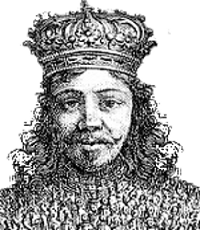1. Introduction
International relations as the topic usually is taught at the university has next to no historical depth. In an introductory class, your teacher might tell you that the basic rules of international politics were established in the aftermath of the Thirty Years War in the seventeenth century, or you might hear something about European colonialism in the nineteenth century and perhaps a word or two about the First World War. Once the class gets going, however, historical references are unlikely to stretch further back than to 1945. It is as though the world was created less than a hundred years ago.
In addition, international politics as it usually is taught is hopelessly Eurocentric. That is, the discipline takes Europe as the standard by which every other part of the world is measured — although “Europe” here also includes the United States and other places where the Europeans settled. The European model is obviously the most important one, your teacher will imply, since this is the model that came to organize international politics everywhere else. The world in which we live today is the world which the Europeans made in their own image.
One of the most important things you learn at the university is to question authorities, and this includes the authority of your teachers. No matter how smart or well-read, your teacher’s perspective will always be only one perspective among many. There is always another story to tell. In this book, we will tell other stories. Our historical perspective goes back to the first millennium of the Common Era and our perspective is explicitly non-European. This is a textbook on international politics that takes history seriously and which puts Europe firmly in its place. Europe matters as well of course, but, as it turns out, not all that much — not once we take a historical look at the world as a whole. It is simply not the case that the history of other parts of the world began the day the first European colonizers arrived. The Europeans did not, as a previous generation of scholars used to argue, “awaken” the natives, or “invite them into world history.” Non-Europeans were always plenty awake, thank you very much, and the idea that the history of Europe is equal to the history of the world is just ridiculous. In this book, it is these non-European histories we are going to tell, and we will tell them on their own terms, not as they were impacted by, or had an impact on, Europe.
And, just to be clear, this alternative perspective is not motivated by an attempt to be “politically correct.” The aim is not to set the record straight out of a concern for balance or respect for people who are marginalized and silenced. These are worthwhile concerns to be sure, but our task is rather more straightforwardly to provide a better account and the kind of knowledge we need in order to understand today’s world. History is constantly making itself present and today people and countries outside of Europe are asserting themselves. The world is once again changing and changes, once underway, can be quick and dramatic. Today Europe and North America play a far less important role in world politics than in the past century, and in the future, this role is likely to become less important still. The world is about to flip and our perspective on the past must be revised. The traditional European version of world history is no longer valid.
As you soon will discover, this book is very much an introductory textbook and anyone with a proper background in world history is bound to find the text far too basic. Yet chances are you do not have a proper background in world history, and if that indeed is the case, there is a lot here for you to learn. Think about the text that follows as a form of remedial education. It provides a chance for you to make up for the gaps that exist in your knowledge of things that all educated people should know.
